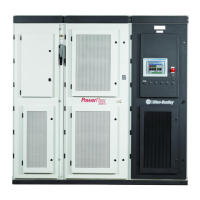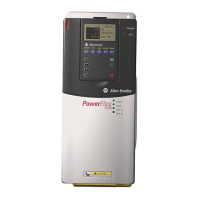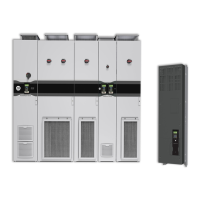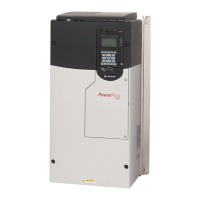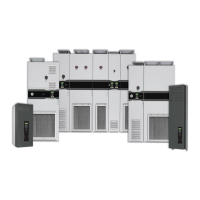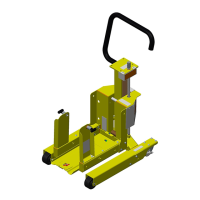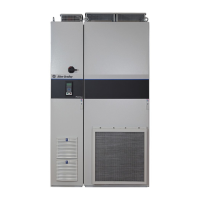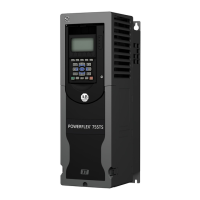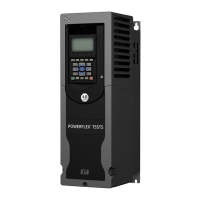Functional Description 1-15
7000-TD002A-EN-P – September 2007
Machine Converter Feedback The function of the machine converter feedback block is to process
(scale and filter) the motor side voltage and current feedback signals
to the form required by the drive control software. The circuitry for
realizing this is built in the Analog Control Board (ACB).
The first VSB provides three motor voltage feedback signals (V
u
, V
v
,
V
w
), the second VSB provides two dc (V
M+
, V
M-
) and one machine
side filter capacitor neutral voltage referenced to ground. The motor
line-to-ground voltages are subtracted from each other to produce the
three motor line-to-line voltages (V
uv
, V
vw
, V
wu
). Two of those
voltages (V
uv
, V
vw
) are filtered and sampled by software for
synchronization and protection. The three line voltages are used to
find peak voltage (V_
pk
). This value is then compared with trip setting
(V
mtrp
) for instantaneous hardware ac over voltage protection. The
motor line-to-ground voltages are summed to determine the motor
neutral-to-ground voltage (V
zs
) and is used for motor neutral over
voltage protection. In addition, the neutral point of the motor filter
capacitor is measured (V
n
) and used for motor side neutral over
voltage protection. The two dc voltages are subtracted to determine
the machine side dc link voltage (V
dci1
), which is sampled by the
drive.
Two Hall Effect Current Sensor (HECS) provide stator current
feedback from two of the motor phases (I
u
, I
w
). Inverting and adding
the two current feedback signals reproduces the current in the
remaining phase. The drive control software uses the sampled
voltages and currents to determine the motor flux and uses it for
synchronization.
For drives with Synchronous Transfer option, an additional VSB is
used for sensing three line-to-line bypass voltages ( V
uvs
, V
vws
, V
wus
).
Two of these (V
uvs
, V
vws
) are further filtered and sampled by the
software for synchronizing the drive output voltage to the bypass
voltage.
If drive is installed with an optional tachometer, the board is plugged
into the J28. The motor speed is then determined by counting the
tach pulses in the FPGA on the DPM.
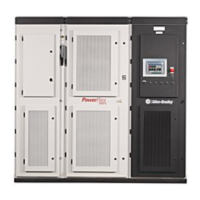
